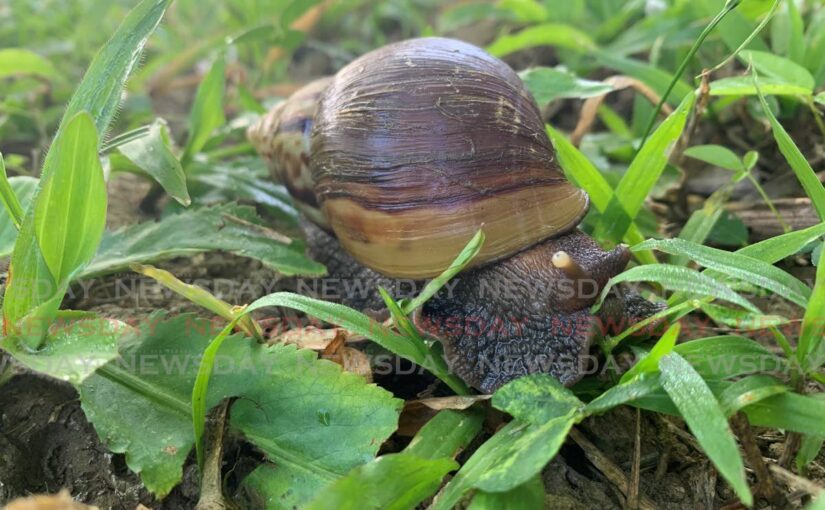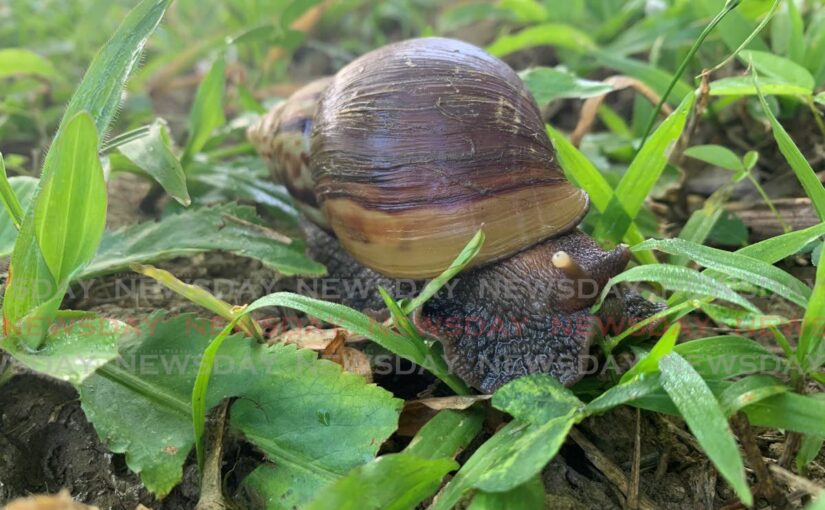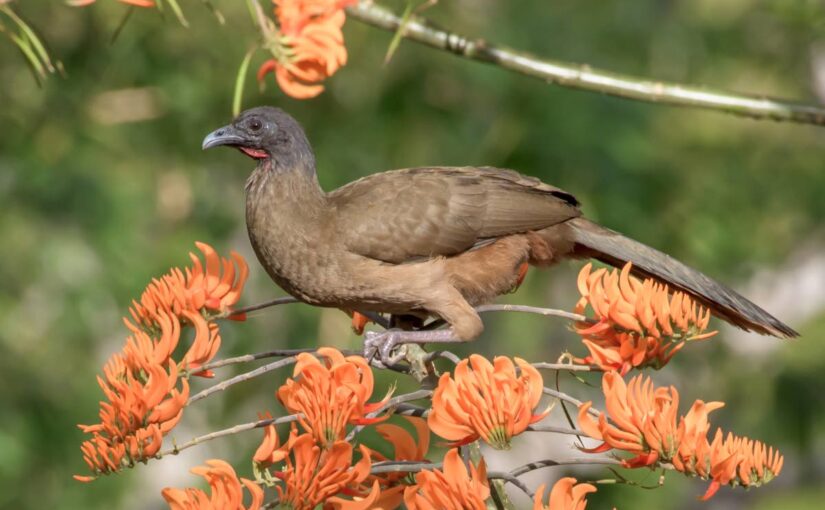MEMBERS of the public collected some 120,000 giant African snails for bounty/reward during a three-week pilot project run in counties Caroni and St...
Vous n'êtes pas connecté
- English
- Français
- عربي
- Español
- Deutsch
- Português
- русский язык
- Català
- Italiano
- Nederlands, Vlaams
- Norsk
- فارسی
- বাংলা
- اردو
- Azərbaycan dili
- Bahasa Indonesia
- Հայերեն
- Ελληνικά
- Bosanski jezik
- українська мова
- Íslenska
- Türkmen, Түркмен
- Türkçe
- Shqip
- Eesti keel
- magyar
- Қазақ тілі
- Kalaallisut ; kalaallit oqaasii
- Lietuvių kalba
- Latviešu valoda
- македонски јазик
- Монгол
- Bahasa Melayu ; بهاس ملايو
- ဗမာစာ
- Slovenščina
- тоҷикӣ ; toğikī ; تاجیکی
- ไทย
- O'zbek ; Ўзбек ; أۇزبېك
- Tiếng Việt
- ភាសាខ្មែរ
- རྫོང་ཁ
- Soomaaliga ; af Soomaali
Rubriques :
 Maroc - NEWSDAY.CO.TT - A la Une - 27/Jan 03:33
Maroc - NEWSDAY.CO.TT - A la Une - 27/Jan 03:33
Move faster on African snails
During a three-week pilot in Caroni and St George West, a bounty-hunting effort gathered 120,000 giant African snails. A mound of the pests weighed five metric tons. The Ministry of Agriculture paid a $27,000 bounty to 52 snail hunters, the ministry's director of extension training, Teresa Rosemond told the Joint Select Committee on Land and Physical Infrastructure on January 22. The snail, a pest with few local predators and a prolific, hermaphroditic reproduction cycle, has an appetite for decaying vegetation and every plant in its path. The local slug-eating snake (sibon nebulatus) preys on the snail, but there are few such snakes in the urban environments where the snails are proliferating. Floodwaters bring mud, vegetation, and the snails down to coastal city centres, where they find comfortable homes in garbage and cuttings. Add to that mix a capacity to carry parasites, including rat lungworm – for which it is described as a "major reservoir"host"—that threaten people, and its growing abundance is a matter of concern. The Health Ministry, responding to reports that the giant African snail was being suggested as a meal, issued a public warning on January 24 about the risk of eating inadequately cooked snails. The ministry noted that the creature's indiscriminate diet might expose it to unknown environmental toxins that cooking might not eliminate. The giant African snail is a "notifiable pest" and the Agriculture Ministry requires citizens to report sightings of it. There's a good reason for that. Disposing of the snail is a multi-layered process involving more steps than an annoyed resident is likely to take. The worst of all possible responses is to crush the snail under a shoe, which triggers an autonomic reflex that spills dozens of eggs everywhere. That temporary satisfaction and considerable mess will probably lead to dozens of juveniles in short order. The giant African snail needs only to mate once to produce fertile eggs and can lay up to 1,200 eggs per year. It lives for up to nine years and can begin reproducing within six months of hatching. The Agriculture Ministry has published extensive documentation on how these snails should be trapped, baited, and destroyed. But only the most committed snail stalkers will follow these detailed instructions. A wider test of the bounty system, with appropriate training and insistence on proper prophylactic equipment for snail collection, offers a promising response to the problem. As a threat and an infestation, the snail is unlikely to be eradicated. However, efforts to limit its population and increase public education about the care necessary in handling them are merited, even for those who want to get rid of the snails to save their gardens and aren't interested in the bounty. The post Move faster on African snails appeared first on Trinidad and Tobago Newsday.
Articles similaires
Health authorities in T&T warn against eating giant African snails
PORT OF SPAIN, Trinidad, CMC – Health authorities are urging people in Trinidad and Tobago to refrain from eating giant African snails, amid...
Namibia bans maize and palm imports from South Africa due to pest outbreaks
The agriculture ministry has announced a ban on the importation and transit of maize and palm products from South Africa. This includes the Free...
Agriculture Ministry meets with San Fernando fishermen over King’s Wharf facility
OFFICIALS from the Ministry of Agriculture, Land and Fisheries met with San Fernando fishermen on the morning of January 20 to discuss concerns over...
Leave the cocrico alone
When I moved to Tobago in 2012, I lived on the coast, in Goodwood, on a somewhat forested property. It was in that peaceful, verdant paradise, with...
Climate change made ferocious LA wildfires more likely: study
by Issam AHMEDHuman-driven climate change set the stage for the devastating Los Angeles wildfires by reducing rainfall, parching vegetation, and...
Whole eggs may increase death risk, but egg whites could be a healthier choice
Eggs are a common part of many diets around the world, but their impact on health is still debated. Some believe eggs are a good source of protein and...
Common insect pests and plant diseases in NZ book
A new booklet ‘Common Insect Pests and Diseases of New Zealand Native Plants’ is now available. New Zealand’s native species have a range of...
Belize Explores Potato Variety to Supply Frito-Lay in Potential New Agriculture Venture
The Ministry of Agriculture is moving to import a new variety of potatoes that may allow Belizean farmers to supply American food company Frito-Lay....
Kenya opens doors with Visa-Free entry for most African countries, excluding two
In a groundbreaking step toward regional integration and with a view to promoting tourism, Kenya has announced that it would allow visa-free entry to...
Les derniers communiqués
-
Aucun élément




